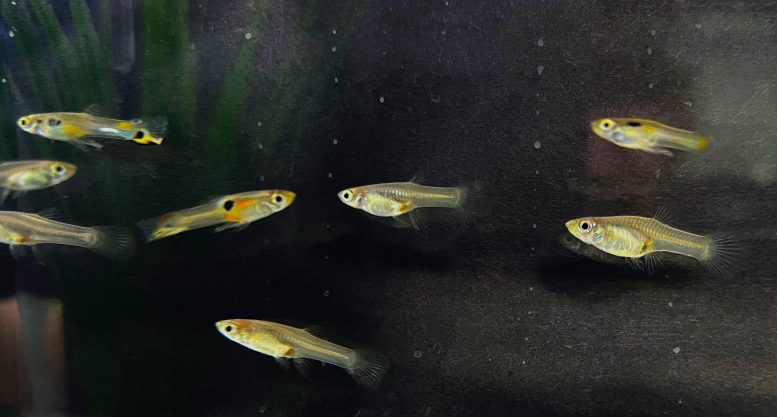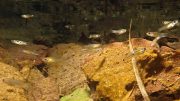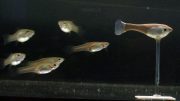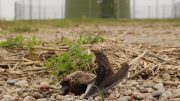
In a study conducted by the University of Exeter, Trinidadian guppies were observed to contradict the “volunteer’s dilemma” — a concept suggesting that individuals in larger groups are less likely to cooperate due to the assumption that others in the group will undertake necessary risks.
Contrary to the “volunteer’s dilemma” suggesting less cooperation in larger groups, a new study found that Trinidadian guppies in larger shoals are more likely to take risks, such as approaching predators, for the collective benefit of the group. Researchers suggest this unexpected cooperation might be due to the presence of more cooperative individuals in larger groups.
Tiny fish called Trinidadian guppies have surprised scientists when faced with the so-called “volunteer’s dilemma.”
The idea of the dilemma is that individuals are less likely to cooperate if they are in a large group.
Various studies have demonstrated this in humans – but guppies appear to buck the trend.
In the new study, by the University of Exeter, guppies in larger groups were more likely to risk approaching a predator to gather information for the shoal.
“When faced with a possible predator, guppies have to balance risks,” said Rebecca Padget, from Exeter’s Centre for Research in Animal Behaviour.
“At least one guppy needs to approach, to find out if there is a threat. An individual that does this could get eaten. However, if none of the guppies take this risk, the whole group is in danger.
“In this ‘volunteer’s dilemma’, mathematical models suggest that individuals in larger groups should be less willing to cooperate.
“In a larger group, there’s more chance another guppy will take the risk.”

Trinidadian guppies. Credit: Rebecca Padget
To test this, the researchers placed a clay model of a pike cichlid (a natural predator of guppies) in a tank containing small (5), medium (10) and large (20) groups of guppies.
Surprisingly, guppies in the large groups were most likely to approach and inspect the predator.
Individuals in large groups inspected an average of 14 times in the seven-minute trials. Guppies in medium groups were least likely to approach – going an average of seven times each.
Members of these medium groups also spent the most time in “refuges” (behind plants or near the gravel at the edge of the tank).
“We can’t be sure why guppies in large groups cooperated more,” Padget said.
“We know guppies have different personalities, so it could be that larger groups are more likely to contain more cooperative individuals – and others then follow their lead.”
After inspecting a predator, guppies return to the group. Previous research has shown that their behavior then signals danger to the others.
In the study, an “inspection” was recorded when a guppy went within 30 cm (12 inches) of the predator. This was usually done either by individuals or small sub-groups of the main shoal.
The paper, published in the journal Proceedings of the Royal Society B, is entitled: “Guppies in large groups cooperate more frequently in an experimental test of the group size paradox.”
Reference: “Guppies in large groups cooperate more frequently in an experimental test of the group size paradox” by Rebecca F. B. Padget, Tim W. Fawcett and Safi K. Darden, 12 July 2023, Proceedings of the Royal Society B.
DOI: 10.1098/rspb.2023.0790









Be the first to comment on "Big Surprises From Tiny Fish: Guppies Challenge “Volunteer’s Dilemma”"